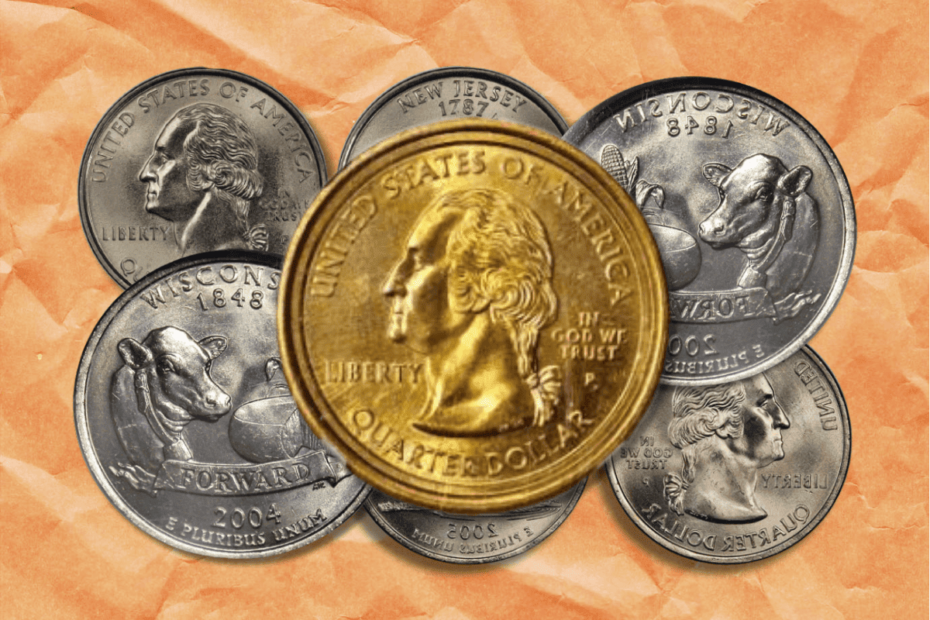Imagine holding a quarter worth thousands of dollars—not because of its age or precious metal content, but because of a tiny, almost imperceptible mistake made during its creation. Welcome to the fascinating world of state quarter error collecting, where imperfections can transform an ordinary coin into a numismatic treasure.
The Birth of a Collecting Phenomenon
When the United States Mint launched the State Quarters Program in 1999, few could have predicted the collecting frenzy it would spark. This groundbreaking initiative wasn‘t just about creating commemorative coins; it was a nationwide celebration of American diversity, with each state telling its unique story through a carefully designed quarter.
A Journey Through Minting Precision
The state quarters program represented a remarkable intersection of art, history, and manufacturing precision. Each coin underwent an intricate process involving multiple stages of design, preparation, and striking. But within this highly controlled environment, something magical happened—errors emerged that would captivate collectors for generations.
The Anatomy of a Coin Error
To truly appreciate error coins, you need to understand the complex journey of coin creation. Imagine a massive machine, calibrated with microscopic precision, suddenly producing something unexpected. These moments of imperfection are what make error coins so extraordinary.
Types of Minting Errors: More Than Meets the Eye
Coin errors aren‘t simply random mistakes. They represent complex interactions between machinery, human intervention, and material properties. Some errors occur during planchet preparation, others during die creation, and some during the striking process itself.
Planchet Errors: The Foundation of Uniqueness
Before a coin is even struck, its blank—called a planchet—can introduce fascinating variations. Imagine a planchet made from the wrong metal, with an unusual thickness, or bearing unexpected surface characteristics. These subtle differences can transform an ordinary quarter into a collector‘s dream.
Die Errors: When Design Meets Imperfection
Die errors occur during the coin‘s design transfer process. Picture a hardened metal die, designed to imprint intricate details, developing microscopic cracks or misalignments. These tiny imperfections can create stunning visual variations that make each coin truly one-of-a-kind.
The Most Legendary State Quarter Errors
The $66,000 Sacagawea Dollar Miracle
Perhaps the most famous state quarter error is the 2000-D Sacagawea Dollar/South Carolina Quarter Mule. This extraordinary coin represents a perfect storm of minting anomalies—a hybrid that shouldn‘t exist, yet miraculously does. Collectors whisper about this coin like a mythical creature, a testament to the unpredictability of the minting process.
Unexpected Metal Transformations
Some of the most valuable errors involve coins struck on unexpected metal surfaces. Imagine a quarter accidentally struck on a nickel planchet or a foreign coin blank. These "wrong planchet" errors represent moments where standard protocols spectacularly failed.
The Economic Landscape of Error Coin Collecting
Error coin collecting isn‘t just a hobby—it‘s a sophisticated market driven by rarity, condition, and collector passion. Prices can fluctuate dramatically based on subtle variations that might be invisible to an untrained eye.
Factors Driving Error Coin Value
Several key factors determine an error coin‘s worth:
- Rarity of the specific error
- Overall coin condition
- Mint mark
- Complexity of the error
- Provenance and authentication
Authentication: Separating Treasure from Trash
Not every unusual coin is a valuable error. Experienced collectors develop a keen eye, understanding the difference between genuine errors and post-mint damage. Professional grading services like PCGS and NGC play a crucial role in verifying and valuing these numismatic gems.
The Role of Technology in Error Detection
Modern technology has transformed error coin authentication. High-resolution imaging, spectral analysis, and advanced metallurgical techniques allow experts to definitively identify and validate rare errors.
Collecting Strategies for the Modern Numismatist
If you‘re considering entering the world of error coin collecting, approach it with patience, curiosity, and a willingness to learn. Start by studying, networking with experienced collectors, and developing a discerning eye.
Building Your Collection
Begin by:
- Studying comprehensive error coin guides
- Attending numismatic conventions
- Connecting with experienced collectors
- Investing in proper storage and preservation techniques
The Future of State Quarter Error Collecting
As minting technologies become increasingly sophisticated, truly remarkable errors will likely become rarer. This scarcity makes existing error coins even more valuable and collectible.
Market Predictions
Experts predict that well-preserved, authenticated state quarter errors will continue to appreciate in value. The combination of historical significance, manufacturing precision, and sheer rarity makes these coins compelling investments.
Conclusion: More Than Just Coins
State quarter errors represent more than monetary value. They‘re tangible evidence of human fallibility within an incredibly precise system. Each error tells a story—of a moment when machinery, human intervention, and chance converged to create something truly unique.
Whether you‘re a seasoned collector or a curious newcomer, the world of state quarter errors invites you to look closer, dig deeper, and appreciate the extraordinary within the ordinary.
